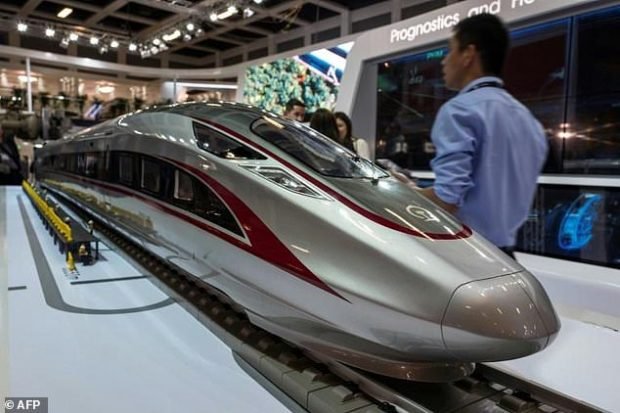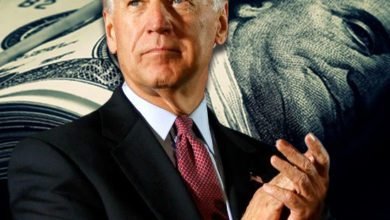Biden’s EV Dreams May Be Screeching To A Halt As Consumer Enthusiasm Wanes

- Consumer demand for electric vehicles (EVs) has been cooler than anticipated in recent months despite the Biden administration’s massive push to subsidize them.
- The demand slowdown may complicate the administration’s efforts to use government action to boost EV supply dramatically in the coming years in order to meet its goal of having 50% of all new car sales be EVs by 2030.
- “This is a classic example of government intervention trying and failing to force market adoption of a technology for which there is little need or real consumer demand,” David Blackmon, a 40-year veteran of the oil and gas industry who now writes and consults about energy, told the Daily Caller News Foundation.
The Biden administration’s electric vehicle (EV) adoption targets may be in serious jeopardy as consumer demand lags behind expectations.
While the Inflation Reduction Act (IRA), President Joe Biden’s signature climate bill, has pumped billions of dollars into subsidizing battery factories and EV assembly plants in the U.S., consumer demand for the vehicles has cooled off in recent months, according to Fortune. The administration’s efforts to shape the vehicle market to favor EVs with subsidies and regulations may be taking shape on the supply side, but cooling interest from consumers could force the industry to fall apart before it has a chance to reach the longer-term nationwide sales targets that the administration has established, numerous energy policy experts told the Daily Caller News Foundation.
“This is a classic example of government intervention trying and failing to force market adoption of a technology for which there is little need or real consumer demand,” David Blackmon, a 40-year veteran of the energy sector who now regularly writes and consults on the industry, told the DCNF. “Since their inception, EVs have been plagued by several chronic limiters, including range anxiety, lack of infrastructure and non-competitive pricing. Government cannot wish those limiters away, nor force them to disappear with debt-funded subsidies and mandates. By trying to force gas-powered cars from the market while simultaneously trying to force EV adoption on a reluctant public, Biden is playing a dangerous game that will very predictably create shortages and much higher prices for all forms of transportation.”
The Biden administration has disbursed billions of dollars into equipping manufacturing facilities to mass-produce EVs, building out a nationwide network of charging stations and setting up tax credits designed to entice consumers in order to meet its goal to have 50% of all new auto sales be EVs by 2030. Further, agencies like the National Highway Traffic Safety Administration and the Environmental Protection Agency have proposed new regulations that would, if finalized, effectively force a considerably larger share of new car sales to be EVs by as early as 2032.
While EV sales are growing, a key problem is that they may not be growing at a fast enough rate to keep the 2030 target easily within reach. EV inventory has almost doubled from 3% of available new car inventory in January to about 6% as of September, while EV sales have gone from 3% of vehicle market share in January to 4% in September, according to Cloud Theory, a company that specializes in auto industry analysis.
“EV sales are rising but are not keeping pace with EV inventory growth,” Rick Wainschel, vice president of data science and analytics for Cloud Theory, recently said of the market. Further, average EV prices dropped by nearly $15,000 dollars between October 2022 and October 2023, according to Cox Automotive.
Even with those prices, most EV models are still more expensive than their internal combustion engine equivalents. For example, Ford’s F-150 Lightning pickup EV costs about $50,000, while the gas-powered version of the F-150 starts at about $37,000, and the Chevrolet Blazer EV is nearly $20,000 more expensive than the $37,000 gas-powered model, according to Fortune.
Car dealers have said that EVs are piling up in their lots, and the supply glut has prompted manufacturers to slice prices to make the cars more appealing to a wider customer base given that many wealthier consumers who wanted an EV already purchased one, according to The Wall Street Journal.
“This was totally predictable because no one in his right mind would let a politician work on his car, but now the politicians pull a number out of the air and demand entire industries heel to their whim,” Dan Kish, a senior research fellow for the Institute for Energy Research, told the DCNF. “The worst part about it is in order to meet their mandates, manufacturers are lowering prices on products they are already losing huge amounts of money on. This means normal people, buying regular cars, get to pay much more for their cars and trucks to subsidize sales of the EVs… They’re destroying consumer choice with centralized mandates. This is government-assisted suicide for the U.S. auto industry. ”
Inflation and higher interest rates are also making EVs more expensive for Americans, especially those who may be close to being able to afford to splurge on an EV that have seen their purchasing power reduced significantly over the past several years. In response to cooling demand, several manufacturers are starting to back off some of their shorter-term EV commitments as consumer interest has cooled, with General Motors recently nixing its target to produce 400,000 EV units by the middle of 2024 and Ford opting to postpone $12 billion in EV-related investment in recent weeks.
“This is the sad result when Joe Biden throws billions of our dollars at an inferior product that Americans do not want. Even with massive taxpayer support in both production and purchase of electric vehicles, these cars are out of reach for families working overtime just to afford groceries,” Larry Behrens, communications director for Power The Future, said of the EV market’s condition. “The facts are simple: EVs are not better for the environment and they’re not better for the economy. However, they are wonderful for Joe Biden’s eco-left friends and that’s why he needed a green ‘slush fund’ such as the Inflation Reduction Act to keep it all afloat.”
Despite these statistics and signs of trouble for the industry and the administration’s goals, White House Climate Adviser Ali Zaidi, an architect of the IRA and one of Biden’s top staffers, remains optimistic and confident in the state of the EV market.
“We’re making massive investments in batteries, 15 gigafactories announced, and if you want to conceptualize what that means in terms of the number of batteries we’ll be able to produce, the U.S. has on average sold 15, 16 million vehicles every year. By 2030, if you just take the battery capacity that’s been announced, we’ll have about 10 to 13 million EVs worth of batteries being manufactured in the United States of America” Zaidi said Wednesday during an interview hosted and live-streamed by The Washington Post. Zaidi described the EV industry as showing “profound momentum” during the same interview.
“The auto industry is standing together unequivocally in the direction of decarbonization, and they’re investing in making those vehicles here in the United States,” Zaidi added.
The White House did not respond immediately to the DCNF’s request for comment.
Content created by The Daily Caller News Foundation is available without charge to any eligible news publisher that can provide a large audience. For licensing opportunities of our original content, please contact licensing@dailycallernewsfoundation.org




